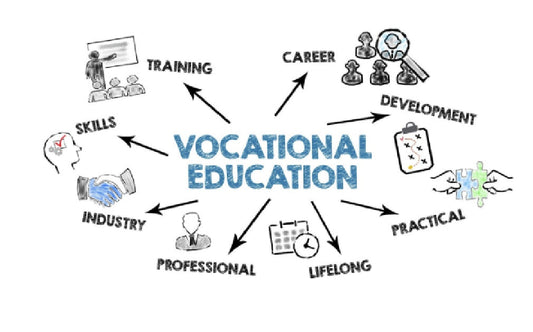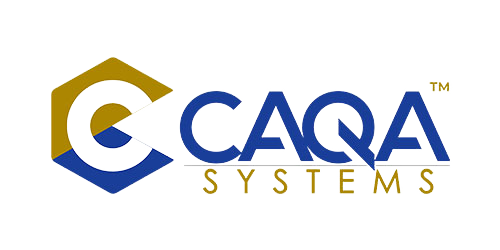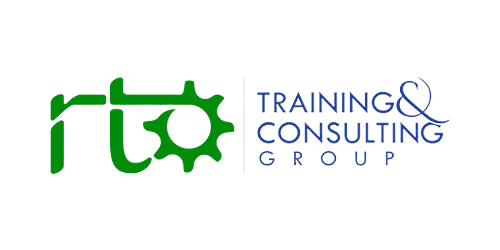The Early Disillusionment Crisis: When Orientation Week Becomes Reorientation Week
The crisp, new orientation lanyards barely settle around the necks of incoming students before the whispers begin: course changes, withdrawals, disillusionment. In Australia's vocational education and training (VET) sector, this phenomenon, while not as pronounced as in some other disciplines, represents a worrying trend that demands our attention. The initial enthusiasm, the carefully crafted personal statements, the months of anxious waiting – all seemingly evaporated within weeks. The questions echo through hallways and online forums: Why are so many students, both domestic and international, so quick to jump ship? What fundamental issues are plaguing our educational institutions, and what does it mean for the future of our vocational workforce?
As orientation weeks unfold across Australia, campuses buzz with the energy of new beginnings. Students from diverse backgrounds converge with hopes and dreams, ready to embark on their educational journey. Yet beneath this veneer of excitement lies a troubling reality – many students, particularly those from international backgrounds, are already questioning their choices. Before orientation concludes, the corridors fill with anxious conversations about possible course transfers, alternative institutions, and even complete withdrawals from study programs. This premature disillusionment reveals deeper systemic issues within Australia's VET sector that require urgent addressing if we hope to maintain our global reputation for educational excellence.
The Two-Tiered Reality: Quality Perception and Government Approval
A significant aspect of this issue, particularly within the international student cohort, revolves around the perceived and actual quality of education offered by various institutions. The Australian government's role in approving these institutions, both public and private, creates an expectation of uniform quality across the VET sector. Yet, the reality often diverges sharply from this expectation. The argument that government approval should inherently equate to quality is a compelling one. If an institution is deemed fit to educate international students, who contribute significantly to the Australian economy – over $36 billion in 2023 alone – surely it should meet rigorous standards. However, the nagging question persists: Would these same institutions be considered adequate for domestic students? The answer, in many cases, is a resounding no.
Australia's higher education and VET systems comprise a diverse array of providers – from prestigious TAFE institutions and established Registered Training Organisations (RTOs) to a sprawling network of private colleges. While some enjoy stellar reputations for excellence in vocational training, others appear to exist primarily to capture the international student market. These disparities create a troubling dichotomy: prestigious institutions with strong industry connections and comprehensive facilities for domestic students, alongside bare-minimum providers that barely satisfy regulatory requirements yet actively recruit international students. This inconsistency undermines Australia's claim to educational excellence and creates a breeding ground for student disappointment.
The International Student Perspective: Investment, Expectations and Reality
Imagine, for a moment, the perspective of an international student and their family considering Australia's VET sector. They have invested substantial financial resources, not to mention emotional capital, in pursuing an education in Australia. For families in countries like India, Nepal, Vietnam, and China, sending a child to study in Australia represents a significant sacrifice – often involving family savings, loans, and sometimes the sale of assets. They have placed their trust in the Australian education system, believing it to be a world leader in vocational training. They deserve the right to choose from any government-approved institution without facing discrimination or settling for a second-rate experience.
International students arrive with expectations shaped by marketing materials, education agents, and Australia's global reputation. They anticipate modern facilities, industry-experienced instructors, practical hands-on training, and clear pathways to employment or further education. When orientation week reveals overcrowded classrooms, outdated equipment, inexperienced teachers, or a curriculum that seems disconnected from industry needs, the sense of betrayal is immediate and profound. A certificate or diploma in Australia's VET sector can cost between $10,000 and $30,000 annually – a sum that represents years of savings for many families in developing nations. This substantial investment deserves commensurate returns in educational quality.
The Regulatory Framework: Compliance Without Excellence
The fundamental flaw lies in Australia's regulatory framework for vocational education. While government approval through bodies like the Australian Skills Quality Authority (ASQA) is a necessary step for VET providers, current standards focus more on compliance than excellence. A private college might satisfy minimum requirements – possessing a physical campus, employing staff with paper qualifications, and offering an accredited curriculum – while still failing to deliver the transformative educational experience that students expect.
The current regulatory approach emphasises documentation over delivery, creating a system where institutions can satisfy auditors without necessarily satisfying students. ASQA's focus on risk-based regulation, while efficient from a bureaucratic perspective, can leave gaps where mediocre providers continue operating without sufficient scrutiny. For the VET sector to thrive, the focus must shift from simply granting approval to ensuring continuous quality assurance. This requires a robust system of monitoring and evaluation, one that holds all institutions accountable for delivering high-quality vocational education that truly prepares students for workplace success.
The Visa Constraint: Trapped in Subpar Programs
Compounding these quality issues are the restrictive student visa policies that govern international education in Australia. Students entering on a subclass 500 visa are typically bound to their initial provider for at least six months before they can transfer without risking their visa status. This rule, intended to prevent provider-hopping and ensure educational stability, can inadvertently trap students in substandard programs even after they've recognised the limitations of their chosen institution.
During orientation week, an international student might realise that their chosen RTO lacks industry connections, modern facilities, or experienced trainers in their trade area. However, bureaucratic hurdles and the looming threat of visa complications create significant barriers to making an immediate change. For those who do pursue transfers, the process involves navigating complex paperwork, facing additional fees, and sometimes encountering rejection from preferred institutions due to capacity constraints or entry requirements. This creates a system where international students face a higher risk when selecting a VET provider, knowing that mistakes cannot be easily corrected.
The Cost Factor: Price vs. Value in Vocational Training
Cost considerations significantly influence course selections and changes, particularly in the VET sector, where practical training requirements can drive up expenses. International students pay premium rates – often two to three times more than their domestic counterparts – yet don't always receive proportionate value. A Certificate IV in a technical trade might cost $15,000 at one private provider compared to $25,000 at a well-known RTO. On paper, the cheaper option appears attractive, especially for students from developing nations operating on tight budgets.
However, lower costs frequently correlate with reduced investment in training facilities, equipment, and qualified staff. A student enrolling in automotive training, for instance, might expect access to modern diagnostic equipment and vehicles, only to find outdated tools and limited practical hours. When these gaps become apparent during orientation, the desire to switch to a higher-quality program intensifies – assuming the student can overcome financial barriers. This price-quality dynamic creates a troubling situation where students must often choose between affordability and quality, a dilemma that shouldn't exist in a properly regulated system.
The Cultural Impact: Segregation in Education
The crux of the matter lies in a perceived two-tiered system within Australia's VET sector. While prestigious, well-funded TAFE institutions remain the preferred choice for domestic students, a plethora of private colleges and less-renowned RTOs cater primarily to international students. This segregation raises serious ethical concerns and practical implications for educational outcomes. It evokes a disturbing analogy: separate hospitals for international patients and local patients or restaurants that cater exclusively to one demographic. Such a system undermines the principle of equal opportunity and fosters a sense of marginalisation among international students.
This segregation extends beyond the classroom walls. International students often find themselves isolated from their domestic peers, missing valuable opportunities for cultural exchange, language development, and professional networking. When certain institutions become known as "international student colleges," domestic students avoid enrolment, creating echo chambers rather than diverse learning communities. This segregation can hinder the development of crucial workplace skills – including communication, teamwork, and cultural awareness—that employers increasingly demand in today's globalised economy. True educational equity requires integrated learning environments where students from all backgrounds learn together and from each other.
Reputational Risk: Word Travels Fast in the Digital Age
Moreover, the reputational damage caused by a perceived two-tiered system can have long-term consequences for Australia's VET sector. Word-of-mouth travels quickly in the digital age, and negative experiences can deter future international students from choosing Australia as their study destination. This is particularly concerning for students from developing nations, who often form the backbone of the international education sector. These students, who may be less familiar with the nuances of the Australian education system, are particularly vulnerable to being misled by misleading marketing or inadequate institutional support.
Social media platforms amplify these voices of disillusionment. A disappointed student from India posting about overcrowded classrooms on Instagram or a Vietnamese student lamenting poor employment outcomes on Facebook can reach thousands of potential applicants. These digital testimonials carry significant weight in collectivist cultures where community recommendations strongly influence decision-making. If Australia wishes to maintain its position as a leading destination for vocational training, addressing these fundamental quality issues must become a priority before reputation damage becomes irreversible.
Case Study: The Veterinary Sector Experience
The veterinary sector within Australia's VET system offers a compelling case study of these broader issues. Certificate and diploma programs in animal studies, veterinary nursing, and related fields attract numerous international students drawn by Australia's strong reputation in animal care and welfare. These programs demand rigorous practical training, access to various animal species, specialised equipment, and strong connections to veterinary clinics for placement opportunities. When institutions lack these essential elements, the consequences extend beyond student disappointment to potential animal welfare concerns.
An international student completing a substandard veterinary nursing qualification might graduate without sufficient hands-on experience or critical skills, potentially compromising animal care when they enter the workforce. Additionally, employers and industry bodies like the Veterinary Nurses Council of Australia (VNCA) increasingly scrutinise the quality of training providers, creating potential employment barriers for graduates from lesser-known institutions. The stakes are particularly high in this sector, where quality training directly impacts animal health outcomes and public safety.
Case Study: RTO Adapting to Engineers Australia's Migration Skills Assessment Changes
This case study examines a Registered Training Organisation (RTO) facing challenges due to recent changes in Engineers Australia's Migration Skills Assessment (MSA) program, effective from September 1, 2024. The RTO currently offers the RII60520 Advanced Diploma of Civil Construction Design, which is not listed among Engineers Australia's accredited programs.
Background
The changes to the MSA program have significant implications for engineering associates, including draftspeople. The MSA pathway for Engineering Associates has been removed, and individuals with non-accredited or provisionally accredited Australian Advanced Diplomas must now apply through the Competency Demonstration Report (CDR) pathway.
Challenges
-
The RTO's current qualification is not accredited by Engineers Australia.
-
Graduates are ineligible for the streamlined Australian Qualification Pathway.
-
Students must pursue the more rigorous CDR pathway.
Impact on Students and Industry
The new requirements create additional hurdles for international students seeking to use their qualifications for migration purposes. Graduates from non-accredited programs may find it more difficult to demonstrate their competencies to Engineers Australia, potentially affecting their career prospects and ability to work in Australia as Civil Engineering Draftspersons.
For the civil engineering industry, these changes could lead to a shortage of qualified draftspersons in the short term, as fewer international graduates may be eligible for immediate employment. Employers may need to invest more in on-the-job training or seek candidates from accredited programs, potentially increasing recruitment costs and timelines.
RTO's Response
The RTO is actively seeking solutions to address these challenges and maintain the value of their program for students. They are exploring various options, including partnering with institutions offering accredited programs, enhancing their current curriculum, and potentially adding new qualifications to their scope of registration.
Solutions for a Sustainable Future: Quality Assurance and Transparency
To address these challenges, Australia's VET sector must adopt a more proactive and comprehensive approach to quality assurance and international education. This includes strengthening quality assurance mechanisms by implementing rigorous and transparent evaluation processes that assess the quality of teaching, practical training resources, and student support services across all VET providers. These processes should include regular unannounced inspections, student satisfaction surveys, and employer feedback mechanisms to ensure a holistic view of provider performance.
Enhancing transparency and information dissemination is crucial for empowering prospective students to make informed choices. A centralised platform comparing providers across key metrics, such as student satisfaction rates, completion statistics, and graduate employment outcomes, would provide valuable insights for decision-making. This increased transparency would also incentivise providers to maintain high standards and continuously improve their offerings.
Promoting integration and inclusivity within the VET sector is essential for creating a rich learning environment. Institutions should be encouraged to foster interaction and collaboration between domestic and international students through incentives in funding models and recognition of best practices in cultural integration. This approach not only enhances the educational experience but also prepares students for diverse workplaces.
Investing in trainer development is fundamental to maintaining high-quality vocational training. All educators in the VET sector should have access to mandatory and substantial professional development opportunities to ensure they possess the necessary skills, industry currency, and resources to effectively teach a diverse student body. This investment in human capital directly translates to improved educational outcomes.
Addressing funding disparities between public and private providers is necessary to ensure equitable access to resources and support for all students. Exploring performance-based funding models that reward quality outcomes rather than mere compliance could help bridge this gap and incentivize excellence across the sector.
Implementing a comprehensive audit system that goes beyond paperwork compliance is critical for maintaining standards. Regular audits should evaluate actual educational delivery, focusing on student outcomes and industry relevance. Providers failing to meet these standards should face meaningful consequences, including potential closure, to safeguard the sector's integrity.
Reforming visa regulations to create more flexible pathways for international students to transfer between providers when quality issues arise is also important. However, this must be balanced with sufficient safeguards to prevent exploitation and provider-hopping, ensuring that the system benefits genuine students while maintaining the sector's reputation.
By implementing these comprehensive measures, Australia's VET sector can address its current challenges and reinforce its position as a global leader in vocational education and training. This approach will not only benefit international students but also strengthen the sector's contribution to Australia's skilled workforce and economic growth.
Balancing Access and Excellence: A Roadmap Forward
The challenge facing Australia's VET sector is balancing accessibility with excellence. Yes, cost and infrastructure differences exist, as they do in any service industry. Just as a tourist can choose between a five-star hotel and a budget motel, students should have the freedom to select an institution that aligns with their needs and aspirations. However, this choice should be based on informed preferences, not on a system that effectively steers international students towards institutions deemed less desirable by domestic students.
The current system, where international students are often funnelled into institutions that local students would avoid, is not only unfair but also unsustainable for the long-term health of Australia's international education sector. Every government-approved provider should deliver education that meets a genuinely high standard – not merely clearing the lowest regulatory bar. The diversity of providers should reflect different specialisations, teaching approaches, and price points – not fundamentally different levels of quality.
An Ethical Imperative for Reform
The issue of course, changes and student disillusionment is not unique to a particular sector but extends throughout Australia's vocational education and training landscape. It underscores the need for a fundamental shift in how we approach international education in the VET sector. Australia has the potential to be a global leader in providing high-quality vocational training to students from all over the world. However, this requires a commitment to fairness, transparency, and continuous improvement.
International education isn't merely an export industry – it's a profound responsibility. When families from developing nations invest their savings and dreams in Australian education, they place immense trust in our institutions and regulatory systems. Honouring that trust requires ensuring that government approval genuinely signifies quality, not merely minimum compliance. By prioritising quality regulation over restrictive policies, Australia can build a VET sector that is sustainable, ethical, and truly world-class.
Only then can we ensure that the initial enthusiasm of orientation week translates into a fulfilling and successful educational journey for all students, regardless of their background or chosen institution. The current murmur of discontent during orientation week could transform into a chorus of satisfaction and accomplishment at graduation – but only if we have the courage to acknowledge and address the systemic issues at hand. The future of Australia's international education sector, and particularly its vocational training component, depends on our willingness to bridge the quality gap and create a system where excellence is universal, not exclusive.


































